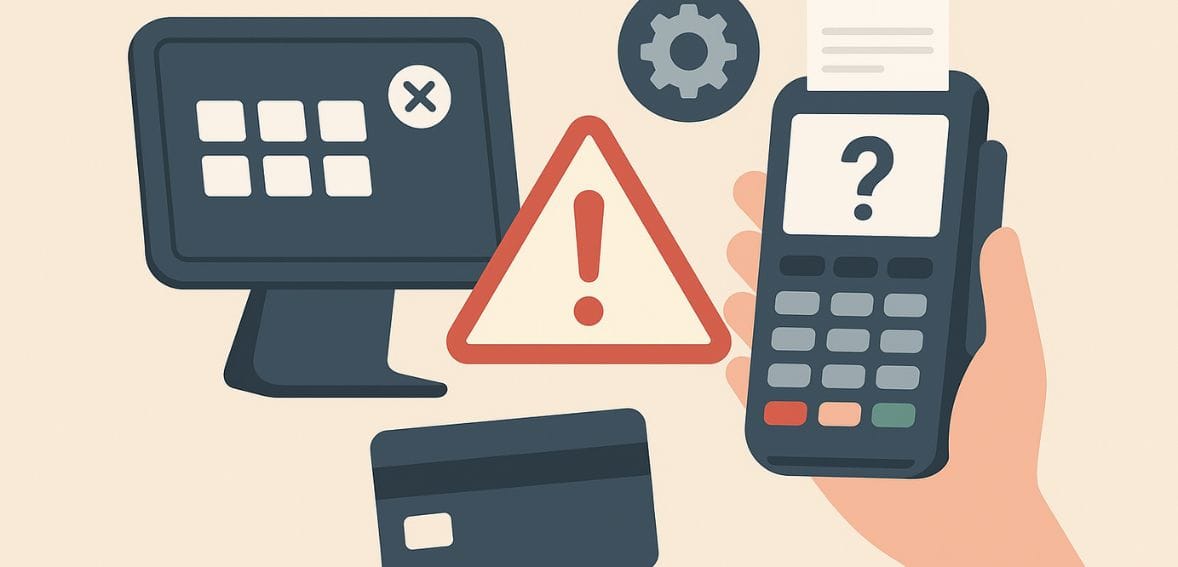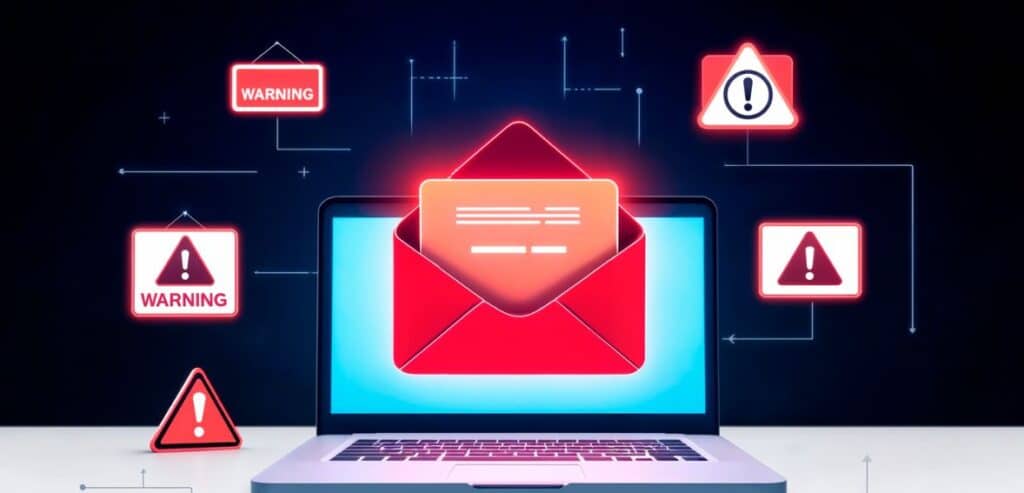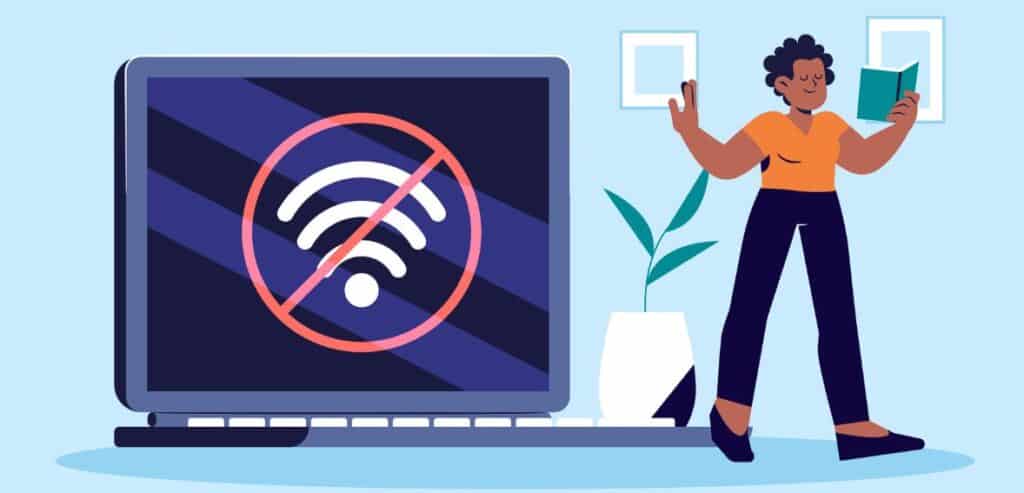
By dinesh August 13, 2025
The credit card terminal and Point-of-Sale (POS) system are the lifeblood of everyday operations for many of businesses. They are the unseen collaborators who handle payments, control inventory, monitor sales, and support a stable financial system. However, if these systems malfunction, the entire operation may be affected in a matter of seconds.
Owners worry about lost sales and tarnished reputations, staff members rush to find alternative payment methods, and customers at the counter start to grow impatient. Even worse, the problems frequently occur at the most inconvenient times—during busy hours, significant sales occasions, or just as a long line has formed.
The majority of POS and credit card terminal problems have simple fixes, even though these disruptions can feel like severe disasters. Knowing what to do and comprehending the underlying causes can make the difference between a five-minute hiccup and a chaotic day. The road to seamless operations, from software bugs to connectivity outages, is rarely about luck but rather about readiness and system knowledge.
When the System Won’t Turn On

One of the most concerning issues a merchant may encounter is a point-of-sale (POS) or terminal that refuses to turn on. Though many causes are relatively minor, it’s easy to imagine the worst—that the device is dead and business will come to a complete stop. Common causes include loose power cables, malfunctioning outlets, or a tripped breaker.
Sometimes ,all it takes to bring down the system is a dead battery in a mobile point-of-sale device or a power adapter that was inadvertently unplugged during cleaning. Prioritizing these fundamentals can help you avoid needless anxiety and save valuable time.
If everything is connected correctly but the device is still not responding, there may be a hardware issue that needs to be fixed by a professional or that needs a loaner terminal to continue working.
Slow Processing and Transaction Delays
A painfully slow transaction process is one of the things that irritates customers the most. People expect card payments to be approved in seconds rather than minutes in the digital age. Overloaded system memory or a poor internet connection are two possible reasons why transactions lag.
A loose Ethernet cable or a broken port may be the cause of wired terminals; interference from adjacent devices or a weak Wi-Fi signal can significantly slow down wireless systems. Another frequent contributing factor is outdated software, as older iterations may find it difficult to effectively handle more recent payment technologies. These bottlenecks can be avoided by testing connection speeds frequently and keeping systems updated.
Error Messages That Don’t Make Sense

It is common for credit card terminals and point-of-sale systems to display cryptic error messages. Without a clear explanation, codes such as “Error 91” or “Transaction Declined” can cause even seasoned employees to lose their minds. These messages frequently point to a communication breakdown between the bank or payment processor and the terminal.
They may also indicate a temporary processor outage, an incorrectly configured terminal, or an expired merchant account setup. When they show up, you can quickly determine whether the problem is with the merchant or higher up the payment chain by writing down the code and calling the provider’s help line.
Facing a cryptic error, such as “Error 96,” can cause panic, especially when the customer is ready to pay. In reality, this indicates a system error, often stemming from a temporary issue on the issuer’s side—so retrying the transaction after waiting briefly is usually the simplest solution. For a detailed walkthrough, check out how to resolve error code 96 and support the customer calmly and effectively.
Card Reading Failures
The inability of the terminal to read a customer’s card is another frequent source of frustration. Failure here could result in an awkward interaction, whether it’s a contactless tap, chip insert, or swipe. Sometimes, merely trying a different approach works because the card itself is damaged or demagnetized. However, recurring malfunctions could be a sign that the reader’s sensors are worn out or dirty.
Performance can be restored by using the proper tools to clean the card slot or tap surface, and software diagnostics can determine whether the problem is firmware-related or mechanical. Having a backup payment method, such as manual entry, guarantees that sales won’t be lost while repairs are being made in if everything else fails.
Printer Malfunctions
The POS printer is crucial for companies that print receipts. An empty paper roll or incorrectly loaded paper could be the reason it stops printing. A disconnected cable, a jam, or a software setting that unintentionally turned off printing could also be the cause.
This can be prevented from becoming a recurrent headache with routine maintenance, such as clearing dust from the feed mechanism and keeping extra paper on hand. In order to minimize customer inconvenience in the event of a printer failure, certain contemporary point-of-sale systems additionally provide email or text receipts as a fallback option.
Connectivity Issues

In order to run cloud-based apps, update sales data, and interact with payment processors, modern point-of-sale systems mainly depend on internet connections. Unless the system has an offline mode, transactions may come to a complete stop when that connection fails.
Local network outages, router issues, and ISP service interruptions are a few examples of the causes. Retailers should make sure their routers are in good working order, test their connection speed and stability on a regular basis, and have a backup plan in case the main network goes down.
Software Glitches and Freezes
POS software may experience glitches or brief freezes, just like any other technology. Running too many programs at once, utilizing out-of-date software versions, or encountering an unforeseen code error can all cause this. Minor hiccups are frequently fixed by restarting the system, but persistent problems might call for a software update or a more thorough hardware-software compatibility check.
These issues are less likely to arise during peak hours if systems are kept free of superfluous programs and updates are applied on time. Sometimes, recurring transactions fail due to misconfigured settings or outdated software. Ensuring that your virtual terminal is set up correctly can resolve many of these issues. This not only helps maintain seamless billing cycles but also reduces customer complaints and failed payment alerts.
Payment Declines That Shouldn’t Happen
Sometimes, entirely valid cards are rejected for no apparent reason. Customers may become embarrassed and lose faith in the company as a result. Temporary bank holds, improper card entry, or problems with communication between the terminal and the processor are common causes.
It is possible to rapidly ascertain whether the problem is transient or necessitates additional assistance by verifying card information, attempting the transaction again, and consulting with the processor. A composed and professional behavior can reassure the client while the matter is being handled ,because in some situations, fraud prevention filters on the customer’s account may block the transaction until it is verified.
Preparing for the Unexpected
While many POS and terminal issues are preventable with good maintenance and monitoring, some problems are simply out of the merchant’s control. That’s why having a clear troubleshooting plan, staff training, and reliable support contacts is essential.
Regularly backing up system data, keeping spare hardware when possible, and maintaining an updated list of service provider contacts ensures that downtime is minimized and recovery is swift.
Security Concerns and Fraud Alerts

Sometimes a POS or credit card terminal issue isn’t even a technical one; rather, it’s a purposeful security measure. Sophisticated fraud detection systems installed by banks and payment processors today may cause alerts or freezes in response to anomalies. Security systems may be activated, for example, by an abrupt increase in high-value transactions, several payments made with foreign-issued credit cards, or quick sales that don’t follow the norm.
Although the purpose of these safeguards is to protect both customers and merchants, if you’re not ready, they may cause disruptions. Understanding the fraud detection policies of your payment processor, communicating directly with their risk team, and being prepared to promptly verify transactions are crucial.
In some cases, you may need to provide supporting documentation, such as receipts or invoices, to prove the validity of certain sales. Establishing this process in advance helps ensure that security measures don’t derail your operations during busy periods.
The Role of Training and Staff Readiness
If those in charge of the most complex POS and terminal systems are unsure of what to do in the event of an issue, they will break down. Reconnecting a cable, restarting the device, or unclogging a paper jam are examples of small, easy fixes that frequently solve problems right away. However, staff members may freeze, guess at the issue, or unintentionally exacerbate it if they are not properly trained.
For this reason, thorough onboarding and frequent refresher training are crucial. In addition to understanding how to operate the system in its optimal configuration, staff members should be able to recognize typical issues and perform simple troubleshooting. When technical difficulties occur, a well-trained staff can frequently continue transactions, avoiding lengthy lines, irate clients, and possibly lost sales.
Long-Term Maintenance and System Health Checks

POS systems and card terminals function best when they receive routine maintenance, just like any other piece of technology. Companies that consider their systems to be “set and forget” frequently encounter avoidable malfunctions at the most inconvenient times. Setting up routine system health checks, both internally and with your provider, can help identify possible problems before they become more serious.
This entails testing connectivity, cleaning hardware parts, updating software, and looking for irregularities in transaction logs. Because older devices might not be compatible with the newest payment security protocols, it’s also a good idea to budget for periodic hardware upgrades.
Proactive maintenance not only increases the equipment’s lifespan but also lowers the possibility of expensive downtime, enabling your company to run with confidence.
Conclusion
More than just pieces of equipment, your point-of-sale system and credit card terminals serve as the vital link between your company and your clients’ wallets. The consequences of their failure are immediate and palpable, but the fixes are frequently easier and closer than they seem.
Merchants can maintain seamless operations even in the face of difficulties by being aware of the most frequent problems, such as hardware malfunctions or connectivity snags, and taking proactive measures to resolve them.
Preparation, quick thinking, and technical know-how can turn potential disasters into minor setbacks in the fast-paced world of retail and service. This ensures that customers leave with a positive impression, regardless of what happens behind the counter.